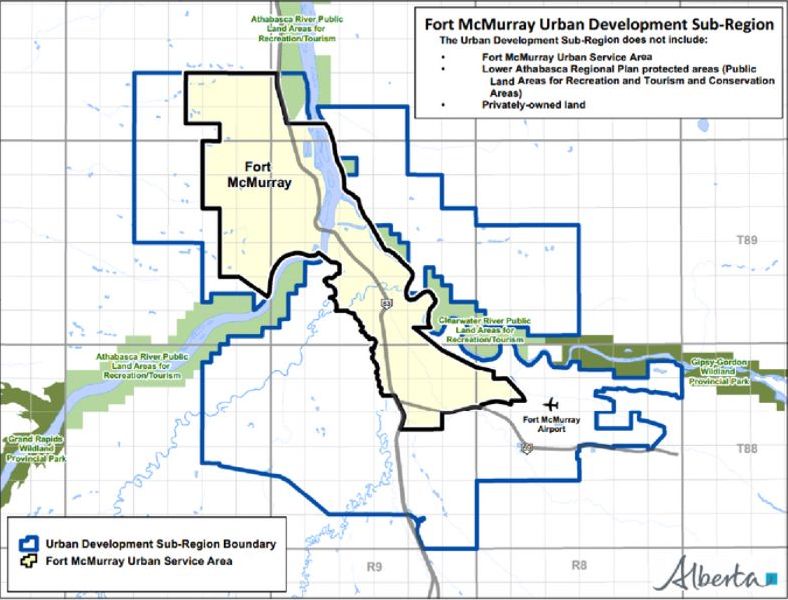EDMONTON – In what’s being called a “milestone” announcement for northern Alberta’s booming city, a major area of land is being allocated to meet Fort McMurray’s needs.

55,000 acres of Crown land is being committed to the Regional Municipality of Wood Buffalo for urban development, which will more than double the size of the country’s fastest growing community.
It’s believed the development on this land could help stabilize housing prices. Along with the need for more businesses, infrastructure, and recreation areas, housing – specifically high prices and low inventory – has been one of the biggest challenges for the area.
“Every year goes by, and I say, ‘where are we going to put these people?’ This lack of land has tied our hands when it comes to future development,” said Wood Buffalo Mayor Melissa Blake. “But it’s also led to all sort of challenges (like) spare housing options.”
Buying this land means more than 400 oil leases, businesses and industry have been cancelled effective immediately and the government is now in talks about compensation.
“People need an urban community that they enjoy, that they want to live in, that they can really celebrate, and that includes not having energy development going on right in that community. So these are balancing interests that we’re addressing, and I think we’ve come up with a very fair approach to it,” said Minister of Energy Ken Hughes.
“This is about creating an even better quality of life for the residents of Fort McMurray, a thriving community that is expected to more than double in population by 2030,” he added. “We think it’s important that people call Fort McMurray home, and not just their place of work.”
According to the government, the land made available was determined based on resource analysis, municipal growth plans, and consultation with First Nations and with stakeholders, including industry and the public.
Land will be developed as it’s needed, and may require further consultations with First Nations Groups as per the government’s constitutional obligations. Blake recognizes there are still short-term growth challenges, including housing and traffic. She says addressing those remains the top priority.
With files from Nancy Carlson and Patricia Kozicka, Global News



Comments